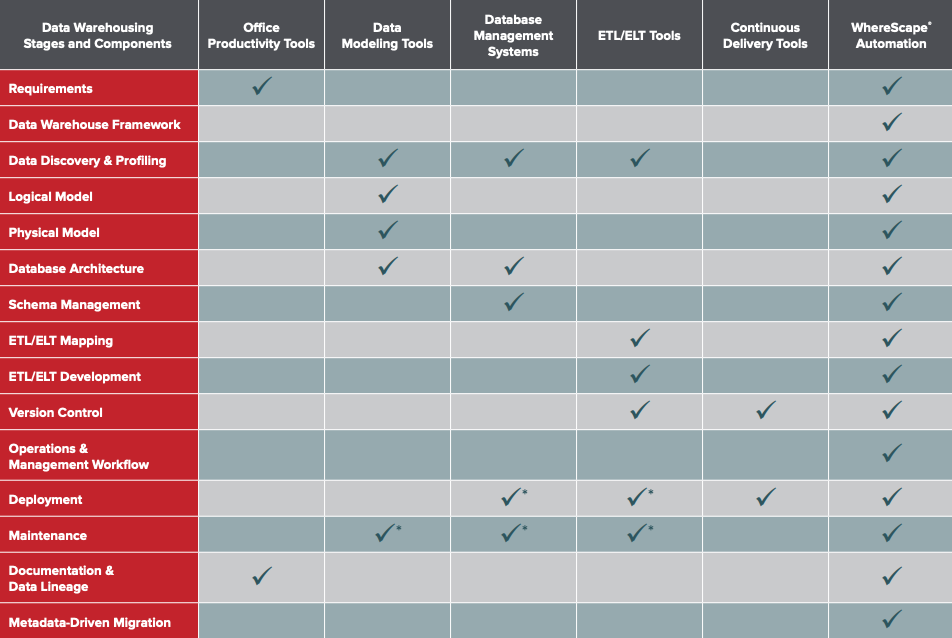Although ELT is a more advanced approach compared to ETL, both data movement solutions only address a limited portion of the data warehousing lifecycle. As a result, organizations must depend on various disparate tools to support the numerous other aspects of designing, developing, deploying, documenting, and operating their data warehouses and other data infrastructure.
Data Warehouse Automation, in contrast to the limited scope of ETL and ELT tools, covers the entire data warehousing lifecycle. From planning, data discovery and design through development, deployment, operations, change management - and even documentation -automation unifies it all.
ETL and ELT tools are limited to generating code to move and transform data, while automation goes beyond code generation. Data Warehouse Automation tools generate database objects such as tables, indexes, views, dimensions and facts – and comprehensive business and technical documentation, including full data lineage.
From designing through operating the data warehouse, data warehouse automation supports teams in reducing the data warehouse development lifecycle and increase developer productivity.

In contrast to ETL and ELT tools, Data Warehouse Automation tools are metadata-driven and can automatically create and maintain metadata to track the upstream and downstream dependencies of all data infrastructure objects. As a result, developers can create, manage, and document dependent objects with the assurance that they will automatically remain integrated and appropriately updated, whenever changes are made to the underlying infrastructure that affect them.
Data Warehouse Automation tools use metadata to synchronize and automate change management and documentation, making it easier and faster for teams to respond to changes. Whether evolving and extending existing environments or migrating to new ones, metadata-driven automation gives developers an advantage compared to using "ETL- or ELT-only" methods.
In cases where ETL or ELT code is already set up and working, data warehouse automation can be implemented without the need to re-engineer or rebuild the existing code. Both solutions can work in tandem, allowing you to enjoy the benefits of automating the rest of the data warehouse lifecycle.
Learn more about data warehouse automation and how it can help your data warehousing team unite and fast-track the entire data warehousing lifecycle to deliver data warehouse projects faster.